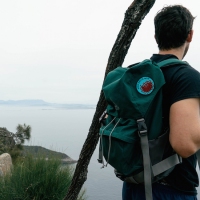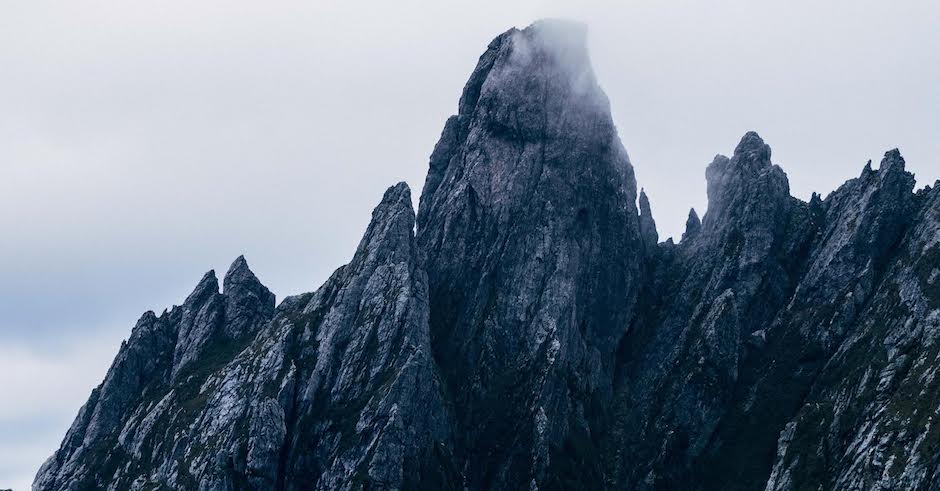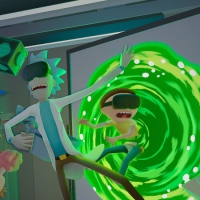 Trampin' Round Tassie with Tom WolffTom catches up with Keep Tassie Wild founder - Josh Pringle.
Trampin' Round Tassie with Tom WolffTom catches up with Keep Tassie Wild founder - Josh Pringle.

Trampin' Round Tassie with Tom Wolff: Winter On The Blade
For the second edition of Trampin' Round Tassie, we learn about one of Tasmania's greatest peaks, and a soon-to-be-released documentary on the climbing of it.
All photos by Andy Szollosi
I first met Andy ‘Sloz’ Szollosi about a year ago and what struck me most was his enthusiasm and love for the bush. Sloz spends his summers showing people around his newfound backyard (the Tasmanian wilderness) and taking photos of it too. I became pretty sure he was some sort of masochist after hearing some second-hand stories. The man has walked the length of the Australian Alps and spent almost three weeks in the remote south-west of Tasmania, in winter, using cold wet socks for a pillow. In 2018 he wants to cross the entire island. But to make it just a little harder, Andy is going to traverse every mountain range in his path.
It’s probably worth mentioning that Andy didn’t go out into a remote area of Tassie in winter just to use cold, wet socks as a pillow. He went out there with a bunch of legends to shoot a film. It’s called Winter on the Blade and it’s currently in the production phase. Wanna know more? Well, I’ll let him do the talking…
Alright. I’m all about being upfront, so let’s get it over with– are you a native Tasmanian, or a mainlander?
I am neither! I was born in Hungary but I have since become Tasmanian...
I think there is something about this island that calls a particular type of person. I first visited Tasmania when I was twelve years old, we came here on a holiday with my parents. This was when we were still living in Hungary. When we visited the Freycinet Peninsula, Wineglass Bay was the first time I swam in the ocean. It blew my mind and awoke in me a deep yearning for Tasmania that will probably never be satisfied.
We moved from Budapest, Hungary to Melbourne, Australia when I was fourteen. It took me another ten years before I ended up in Tasmania, to take up wilderness guiding in an attempt to explore people's connection to the natural world. I haven't looked back. Of course, this doesn't mean that the occasional adventure won't be undertaken to other places - the world is a big place, but I like the way Tassie now feels like home to me.
Briefly, what’s Winter on the Blade about and where was it shot?
Winter on the Blade is a soon to be released documentary film by Tasmanian filmmaker Simon Bischoff that tells the story of our expedition in which our climbers ascended Blade Ridge on Federation Peak, located in Tasmania's rugged South West wilderness. Our team consisted of three photographers/videographers, three climbers, and myself as expedition leader. Since our proposed route has been climbed plenty of times before, we decided to undertake our trip in mid-winter, when the conditions on the mountain deter usually even the most foolhardy climbers.
A particularly interesting element of our trip was that one of our climbers, Mark Savage, had attempted the same route, in winter, 24 years previously. That time, he and his buddies failed miserably. Due to the excessive snow cover, they failed to summit the mountain at all, let alone climb their proposed feature: Blade Ridge. 24 years later, Mark (by far the most experienced member of our team) predicted the chance of success was incredibly low. It was with these odds that our team of seven adventurers commenced the hike out to Federation Peak in saturating rain on the 25 June 2017. The story of how the expedition unfolded will be told in our film: Winter on the Blade.
Were you the brainchild of this insane and brilliant idea?
I proposed the idea in December 2016 as a far-fetched plan to secure an annual adventure grant by North Face and Australian Geographic. My initial plan was to complete a ridgeline traverse of Tasmania, north to south, in winter. While ambition is commendable in the role of the expedition leader, this plan appeared too close to certain death to even the most intrepid outdoors people I knew, and as a result, I couldn’t run the trip in good conscience. In the end, I altered the plans to make the trip more alluring. What if, instead of a masochistic slog through wet slushy snow for four months, we assembled a team that was able to ascend the most aesthetic line on Federation Peak – the mountain Sir Edmund Hillary once dubbed as ‘Australia's only real mountain'. To secure the adventure grant, we would shoot a documentary about the expedition, and to accomplish the world first, we'd do the climb in winter.
So why this idea? I simply wanted to run a trip that brought people together with nature; I wanted to show that through co-operation, even the nearly impossible becomes achievable.
After all, we as a global society have a difficult task ahead of us if we're going to feed 10 billion consumption-hungry people by the end of this century. The only way to accomplish this is by co-operation, not just with our fellow humans, but co-operation with our environment. We must acknowledge the need and inherent worth of our natural world that the very foundations of our civilisation rest on - clean air, food, water and shelter. These are the basic physical needs provided to us by our environment. If we destroy these basics through the mass consumption of natural resources and poor waste management, we put our lives in great peril.
What was the best lesson you learnt from spending 17 days out in the middle of nowhere in the Tasmanian winter?
Tasmania's south-west wilderness can be a wonderful, if tough teacher. The south-west, on this trip in particular, taught me the absolute necessity of friendship. During our hike out to Federation Peak, if we weren't all laughing together, through the mud, through the wet and the cold, we would all have been crying.
So yeah, what I've learnt is that it's ok to be in a shitty situation with somebody else, especially if they're suffering too. It's that shared human experience that counts. Instead of suffering, all of a sudden you find yourself laughing because the situation has become ridiculous.
What made you laugh the most?
On the trip we all went a little bit insane when we were tent bound for ten days and we had nothing to do except keep each other entertained, through leaking tents, tightly rationed meals and pooping in plastic bags. We all went a bit insane but we did it together, and that made it not only bearable but a most memorable experience.
The laughs that were truly memorable were those moments where my companions cracked. I remember one of our photographers, Olivia declaring one particularly wet day: “Andy, I think I've gone crazy. I'm actually enjoying myself. But I think I'd rather be crazy and happy than sane and miserable.”
I also remember one day our climbers Mick and Mark decided to strip off in the sleety drizzle and do a nudie run on the icy wooden platforms. There was a naked impersonation of Michelangelo's 'Creation of Adam', with index fingers touching as the great masterpiece unfolded in real life. We'll see if that particular scene makes it into the film. Then Mark fell over on the icy boardwalk and stubbed his toe purple. It was novelty at its best.
You’re a bushwalking tour guide (like me!) on Tassie's Overland track. What do you see as your most important role in being a wilderness guide?
My key aim as a guide is to help people reconnect with nature. Unfortunately, the trajectory of our society is taking people further and further away from nature and with it, we are losing the connection with our roots and our understanding of the human condition. Our society values economic growth over the healthy functioning of the ecosystems that sustain all life on Earth. This is insanity!
This is why wilderness tours are a great idea; they give people a chance to reconnect with nature and also their own nature. I have seen countless clients go through the transformation during the six-day trek of the Overland Track through Tasmania's Central Highlands. They come away from the experience with a deeper respect for the place, and perhaps with a bit more appreciation of the links that tie us to the natural world.
You are also a staunch defender of the wild places in Tassie. Is there a conflict between nature-based tourism and the preservation of wilderness? How do you marry these two ideas?
There is a conflict because there is big money to be made in eco-tourism, which is quickly becoming the new 'booming industry' in Tasmania. Our state government is realising the economic advantages of opening up pristine wilderness areas for private development. There are countless proposals which are aiming to put infrastructure into areas which have been kept free of the impacts of modern technology until now – luxury lodges, chair lifts and dry tracks are all part of the proposed developments in sensitive areas. These proposals have the potential to transform the landscape in a way that cannot quickly be undone in order to make the experience marketable.
The whole point about wilderness is that it's wild. It's a place that is largely free of the impacts of modern technology. If we put in dry tracks, comfortable lodges, chair lifts or any other infrastructure that modifies the place purely for our comfort and benefit, we have already degraded the inherent values of the place. Wilderness is not a place without people, it's a place where people live with nature. After all, humans have lived in Tasmania for thirty thousand years. The landscape has already been modified, even before European settlement, through the use of fire to clear up scrub-choked valleys, to make them more convenient to travel through and to keep hunting areas open.
Any framing of national parks management, we must accept that some tracks and shelters must be built in wilderness areas in order to make these places accessible not just for the hardcore outdoors people, but for everyone who is willing to give respect to these places by adhering to minimal impact codes.
I do think that reasonable access must be provided to at least some areas of the Tasmanian Wilderness World Heritage Area, so that people may experience the immersion into the wilderness, first hand. If people don't experience it, the value of these places to the human spirit will be forgotten. And if the value of these places is forgotten, the wilderness will succumb to the growing hunger of capitalism. The ores will get dug out of the ground and the old growth forests will get the chop, one tree at a time, until there is nothing left, because no one would appreciate what is actually being lost. And if our wilderness disappears, where will we turn to, when we need refuge, an escape from the stresses of 'civilised' life? Wilderness is our most valuable commodity. It's a reminder of our roots, of what we are. If we lose our ability to appreciate Nature exactly the way it is, without any modifications, we are doomed. It's that simple.
I’ve spent the last few years attempting to write about and take photos of the Tasmanian landscape. It’s bloody hard! As a photographer, how do you attempt to capture the infinite beauty of those really special places you go to?
I treat my wilderness photography as an art. It is of utmost importance to me in each moment of my day to day life. My life revolves around my photography, I practice it, I nurture it and I give it everything I've got. I believe the best photos are found in places of great beauty that are very rarely visited by humans. The wilderness is a staunch defender of itself. Some places, have a mythical calling that requires the visitor to earn the right to arrive at the place. I often find myself in thick scrub, wading bulging rivers, and being caught out in storms that rattle my tent in the middle of the night. I am a serious wilderness traveller, and I am not scared to get myself out as far as I need to go. I wait for as long as I need to wait. Sometimes I'm not even sure what I'm waiting for, but that's because whatever it is, it hasn't happened yet.
What’s more likely (and what’s more horrifying) to be a reality in fifty years time? An airport-style travelator thingy that extends for the length of the Overland Track, or a car park at the base of Federation Peak?
The car park at the base of Federation Peak is way more terrifying because that scenario is a lot more likely. I would campaign against it with every inch of strength I've got. The value of places like Federation Peak lies in they are inaccessible by conventional means; you need to spend two days in knee deep mud, walking 8-10 hours a day through very difficult terrain. There is no easy way to the summit, you need to climb vertically over a 100 m sheer drop. If you slip, you will certainly die. If you don't slip, you have climbed Federation Peak.
If they put in a car park, and a comfortable chair lift and a cafe on the summit, it's going to become another one of those thousands of places that already exist. Federation Peak is Tasmania's ultimate symbol for wilderness. What we do to it, we do to all wilderness.
Winter On The Blade (WEBSITE) is the second instalment of Trampin' Round Tassie, a series into Tasmanian nature and culture from our Tasmanian writer Tom Wolff. Read the first instalment on 'Keep Tassie Wild' HERE.
 Trampin' Round Tassie with Tom WolffTom catches up with Keep Tassie Wild founder - Josh Pringle.
Trampin' Round Tassie with Tom WolffTom catches up with Keep Tassie Wild founder - Josh Pringle.
 We spent a fair chunk of 4/20 playing the Rick & Morty VR game, Virtual Rick-AlityYou’re virtually Morty, except you’re not, you’re a useless dumb clone Morty.
We spent a fair chunk of 4/20 playing the Rick & Morty VR game, Virtual Rick-AlityYou’re virtually Morty, except you’re not, you’re a useless dumb clone Morty.